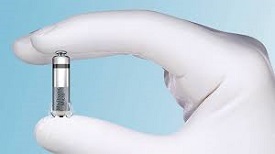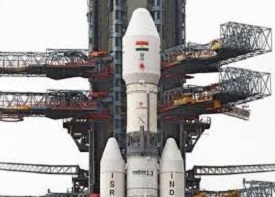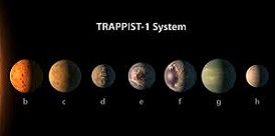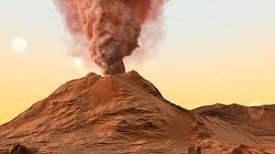
- Appointments
- Awards
- Books & Authors
- Committees
- Deaths
- Defence
- Economic
- Environment
- Finance
- Important Days
- International
- Miscellaneous
- National
- Persons in NEWS
- Places in NEWS
- Regional
- Reports
- Resignations & Retirements
- Science & Technology
- Sports
- February 2017 - Exams Resources
- Current Affairs - Quiz
- Current Affairs - Test
- Current Affairs - PDF
Current Affairs February 2017 - Technology
News 1 - NASAs Juno spacecraft completed fourth Jupiter flyby

NASAs Juno spacecraft made the fourth flyby over Jupiter. Juno was about 2,670 miles (4,300 kilometres) above the planet's cloud tops and traveling at a speed of about 129,000 mph (57.8 kilometres per second) relative to the planet.
All of Junos eight science instruments and the spacecrafts JunoCam were operating during the flyby to collect data. Juno launched on Aug. 5, 2011, from Cape Canaveral, Florida, and arrived at Jupiter on July 4, 2016.
News 2 - Scientists develop terahertz transmitter that can send data 10 times faster than 5G

Panasonic Corporation, Hiroshima University and Japan's National Institute of Information and Communications Technology are developing a terahertz transmitter.
The technology can transmit digital data at a rate exceeding 100 gigabits per second over a single channel using the 300-gigahertz band which is at least 10 times faster than fifthgeneration mobile networks. It paves way for faster downloads and improve in-flight network connection speeds. Its possible applications include fast download from contents servers to mobile devices.
News 3 - Scientist unveil the Worlds smallest pacemaker in US

Scientist in the United States have successfully implanted the worlds smallest pacemaker for the first time in a patient. The pacemaker is as big as a large vitamin capsule and provides the most advanced pacing technology. It is approved by the US Food and Drug Administration (FDA).
The Micra Transcatheter Pacing System (TPS) is for patients with bradycardia. It is a condition characterised by a slow heart rate, usually fewer than 60 beats per minute.
News 4 - ISRO sets a world record by launching 104 satellites in a single mission

ISRO created history with the successful launch of 104 satellites in a single mission on a single rocket. This is the highest number of satellites ever launched in a single mission.
The PSLV-C37 launched the 714 kg Cartosat-2 series satellite for earth observation and 103 co-passenger satellites from the First Launch Pad (FLP) of Satish Dhawan Space Centre (SDSC) SHAR, Sriharikota. The co-passenger satellites comprised of 101 nano satellites, one each from Kazakhstan, Israel, The Netherlands, Switzerland, United Arab Emirates (UAE) and 96 from United States of America (USA), as well as two Nano satellites from India.
News 5 - First Indian Genomics Beacon Launched in the UK
Global Gene Corp and Global Alliance for Genomics and Health (GA4GH) launched the first-ever beacon for Indian genomics data, ggcINDIA.
A beacon is an online web service that allows researchers to determine whether an institution has genomic data in its data set.
It is expected to help scientists develop more effective drug delivery systems. The aim of the Indian beacon is to address the gap in shared Indian genomics data.
News 6 - ISRO successfully tested engine for GSLV Mark III rocket

Indian Space Research Organisation (ISRO) has successfully ground tested its indigenously developed Cryogenic Upper Stage engine for GSLV Mark III at its Liquid Propulsion Complex at Mahendragiri in Tirunelveli district of Tamil Nadu.
The C25 stage is the most powerful upper stage developed by ISRO and uses Liquid Oxygen and Liquid Hydrogen propellant combination. The development of C25 cryogenic stage will provide ISRO capability to launch four-tonne class satellites in Geosynchronous Transfer Orbit. The engine will be put into use in April.
News 7 - SpaceX launched 1st Private Rocket from the Historic NASA Pad

SpaceX has launched the first private rocket from the historic NASA Pad. The California-based company's Falcon 9 rocket launched a robotic Dragon cargo capsule towards the International Space Station from the Launch Complex 39A at the NASA's Kennedy Space Centre.
Once the Dragon would arrive at the International Space Station, European astronaut Thomas Pesquet will use a 58-foot robotic arm to snare the spacecraft and reel it into a docking port.
News 8 - Seven new earth sized exoplanets revolving around single star discovered

NASA's Spitzer Space Telescope revealed the first known system of seven Earth-size planets around a single star. Three of these planets are firmly located in the habitable zone.
The discovery sets a record for the greatest number of habitable-zone planets found around a single star outside our solar system. Since they are located outside of our solar system, these planets are scientifically known as exoplanets. This exoplanet system is called TRAPPIST-1. The system of planets is in constellation Aquarius.
News 9 - Volcanic activity of 2 billion years discovered on Mars

A discovery was made following an analysis of a meteorite from the planet, which was found in Africa in 2012. Scientist found evidence of two billion years of volcanic activity on Mars. Scientist confirmed presence of oldest volcanoes in the solar system found on Mars.
Discovery provided new evidence on the planets evolution and paved way for more insight into its history of volcanic activity. Discovery confirmed some of the longest-lived volcanoes in the solar system.
News 10 - World's first robot table tennis tutor sets Guinness record

The world's first robot table tennis tutor in Japan has set a new Guinness World Record for its uncanny ability of being able to play the game better than most humans. FORPHEUS (Future Omron Robotics Technology for Exploring Possibility of Harmonised Automation with Sinic Theoretics) has officially been given the Guinness title for its unique technological intelligence and educational capabilities.
As per the project's lead developer Taku Oya, from Omron Corporation, the goal of FORPHEUS is to harmonize humans and robots, by way of teaching the game of table tennis to human players.